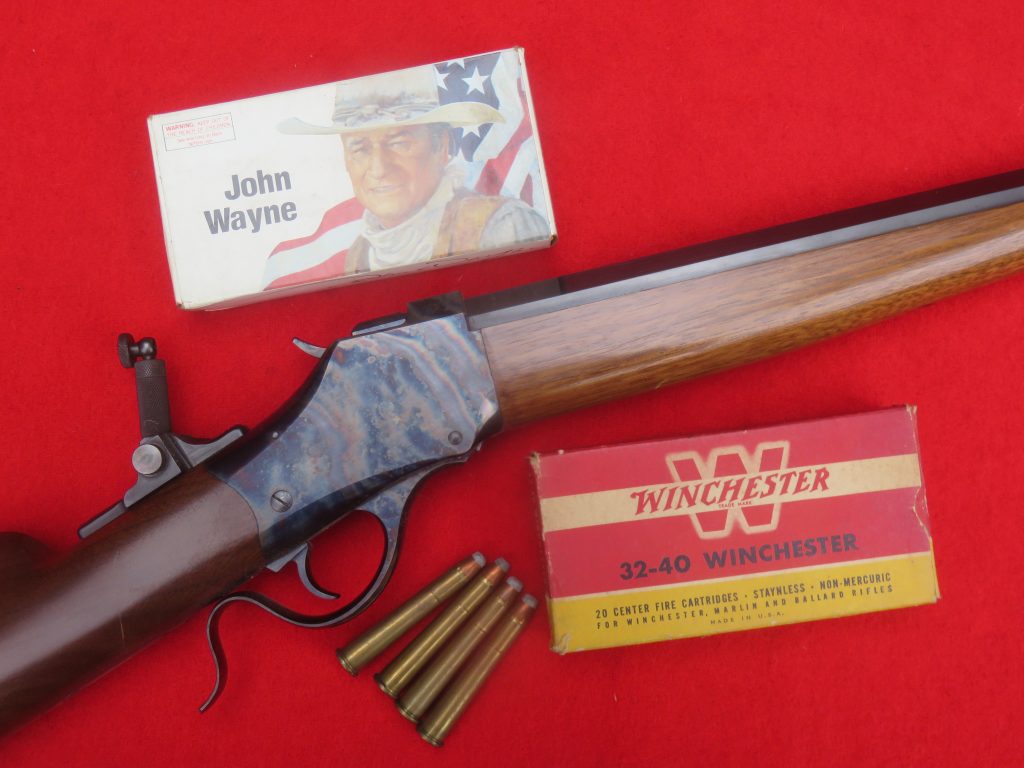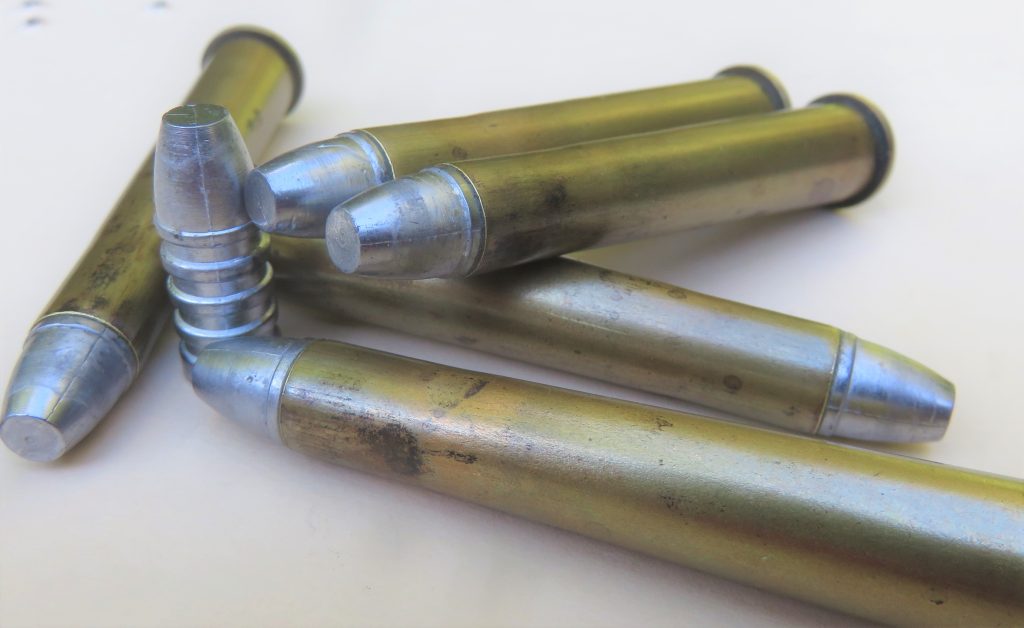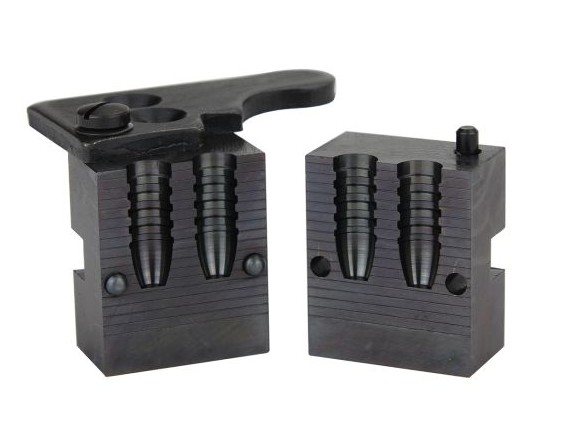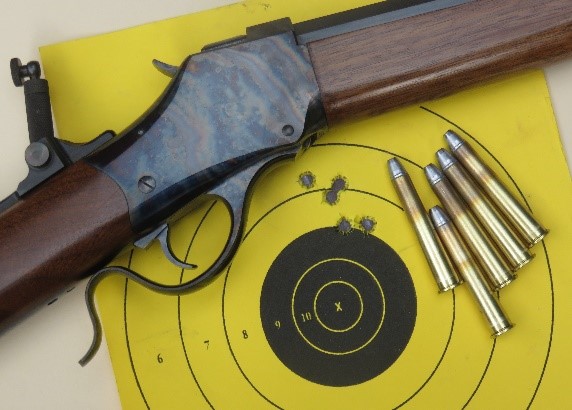
By Mike Nesbitt | Contributing Editor
If we want to describe the .32/40 with just one word, a very appropriate word is ‘enjoyable’ because the .32/40 is simply a pleasure in so many ways.
It is very enjoyable to shoot and it’s enjoyable to make ammunition for this caliber rifle. Rifles in .32/40 caliber have maintained their places in my gun rack for several years and they are rifles I respect in many ways.
Another way to enjoy the .32/40 is in its history. The .32/40 was one of our most favored cartridges just over 100 years ago. It had a lot to offer to both target shooters and hunters in America and those offerings were recognized in the areas of performance and variety. The .32/40 was not just a target cartridge, it was a particular favorite of the woodsmen and deer hunters. The popularity of the .32/40 was very high and there were many good reasons for it.
The .32/40 we recognize today began its long life in 1884 as the .32/40 Ballard, introduced about the same time as the .38/55 Ballard. It was designed for the single shot Ballard rifles as a short-range target cartridge. Short range, in the style of competitive shooting of the 1880s, must be defined as out to 200 yards. There are copies of the Ballard rifles available today and some of them, I’m just guessing, are chambered for the excellent .32/40.

Soon after the introduction of this cartridge, Marlin (and most Ballard rifles were made by Marlin) adapted their lever action Model 1881 to both the .32/40 and the .38/55. Putting the .32/40 into a repeating lever action allowed its reputation as a hunting cartridge to blossom and its popularity began to rise.
By the mid-1890s the popularity of the .32/40 was firmly entrenched. It was available in Winchester, Stevens, and Remington single shots plus the lever action 1893 Marlin and the 1894 Winchester. By 1903 it was also available in the famous Savage 1899 lever action rifle. The popularity of the .32/40 was very wide ranged and it took the younger smokeless powdered .30/30 several years to dethrone the .32/40 as this country’s most popular cartridge.
Now, to be completely specific, there was more than one .32/40 cartridge. Remington had their own .32/40. Remington’s .32/40 was an odd ball that had a straight taper case with a rim size similar to the .303 British. It should have been called the .30/40 Remington because it used a .308″ bullet. This was a very short-lived cartridge and examples of it are highly prized by cartridge collectors today.
Another was the .32/40 Bullard, an oddity that used a short case with a true bottleneck and a .315″ diameter bullet. This was designed for the Bullard lever action repeater which used a unique rack and pinion action. It left the market quietly and it is very seldom mentioned or encountered today.

Back in the old days when anyone chambered a cartridge in their rifles, they put their own name on it. That’s why the .32/40 Ballard is better known today as the .32/40 Winchester. It’s the same cartridge and it was also called the .32/40 Marlin, sometimes with slightly different loads but always the same .32/40. While various names indicated the same cartridge, the .32/40 had a much greater variety in loadings than most cartridges. This variety included the high velocity smokeless loads that were introduced in the mid-1890s and they added a lot to the .32/40’s appeal and popularity. In fact, the Remington/UMC .32/40 High Power load fired a 165-grain soft point bullet at a higher velocity than the standard .30/30 load at that time.
One of the old-timers who used and liked the .32/40 was my own grandfather, Charlie Glenham. Grandpa was a market hunter and he also hunted for logging camps in the early days when the loggers went into the woods by train, worked all week in a camp, and came back to town the next weekend on the loaded train. He told me that a good day’s work in a big camp was three deer, three deer per day! That’s a lot of hunting. Grandpa was also a packer, carrying goods and freight on pack horses, in western Canada and he worked with Packer Jack Newman, the gunfightin’ packer that Elmer Keith wrote about in his book SIXGUNS BY KEITH. My grandfather used a lot of rifles, although his real love was for shotguns, and the .32/40 was one rifle he really liked.
Grandpa hunted moose in Canada but only for one day. He hired an Indian to guide him and after a short time they came upon a bull moose. Grandpa said that moose dropped like a stone when he shot. The guide, however, said that moose was too small and they should look for another one. My grandfather objected, asking why let this animal go to waste? The guide explained, in his own philosophy, that because this moose had died, another animal would live on. He meant that wolves or perhaps other carnivores would feed on the dead moose and not have to hunt. The guide was convincing, they left the first moose where it lay and hunted for another, larger bull.
A bigger bull was found that afternoon. Grandpa killed it and this one was quartered out for transportation. My grandfather never did tell me what kind of ammunition he was using when he killed those two moose but he certainly told me what rifle he used and what caliber that rifle was. He used a Savage 99 in .32/40 and he considered the .32/40 more than adequate for the job.
My grandfather, along with a whole lot of other people, considered the .32/40 an “all around cartridge.” We don’t consider the .32/40 as an “all around” number today but we don’t define “all around” the same as our grandfathers did. Today an “all around” rifle isn’t worth its powder unless it can handle deer, elk, moose, black bear and grizzly, big horn sheep, mountain goats, and maybe the huge brown bears too. That’s actually a pretty specific order because all those critters are big game animals. In the old days an “all around” rifle was used to take small game for pot meat, had the range to take varmints or predators, and still have the punch for deer or black bear. That’s a wider bill to fill than just for big game hunting and a woodsman would need no other gun, not even a .22. The .32/40 had the versatility to meet those demands.

Loading for Effect
For small game hunting or just some very enjoyable shooting the short-range load in the .32/40 is superb. This uses a bullet from Lyman’s #31950, a 98-grain bullet that was at one time billed as a conical bullet for .31 caliber percussion revolvers. This is the original .32/40 short range bullet and it performs very well over 5 grains of Unique smokeless powder or 13 grains of FFg black powder. Thirteen grains of loose black FFg or GOEX’s “Cartridge” in the .32/40 case duplicates the original factory loaded short range load.
Another bullet that can be used for the short-range load is NEI Handtools’ new #324-125, a 125-grain pointed plain base bullet. That’s a bullet designed for light loads in the 8mm rifle cartridges but it would work very well in the .32/40 when sized to .321″ and being pointed it would do little meat damage to small game. But be sure to keep that pointed bullet out of a repeating rifle’s tubular magazine; use it only by single loading.
Moving up in power, my favorite bullet is the .32-165 bullet cast in an original Winchester mold. This is the bullet I use over 40 grains of GOEX “Cartridge” powder (now using the same amount of Swiss 1 ½ Fg) but I’ve also shot many of them using 13.2 grains of #4759 as a low-pressure smokeless load. While black powder is my favorite, I did use a lot of smokeless loads in my repeating .32/40 rifles.
Shooting the 165-grain bullet in front of 40 grains of Swiss 1½ Fg powder from my 1885 ‘Highwall’ from C. Sharps Arms is certainly very enjoyable. The rifle has rather little recoil, the report is healthy but not a tremendously loud blast, and the groups obtained within 100 yards are very rewarding.
For a similar bullet, NEI Handtools makes a very good one, #322-160GC, a flat nosed gas check bullet that performs with excellence. A 150-grain plain based version of this bullet is also available. NEI also makes a 175-grain bullet which is listed as their #321-175GC. The heavier bullet is what should be recommended if the .32/40 is to be used for hunting deer or similar game.

Shooting Game
The only bullet that I’ve used in the .32/40 to take big game, a Columbia Black-tail buck, with was cast from Lyman’s #319295, which was designed around the turn of the century by the Ideal Tool Company for high-power loads in the .32/40. This is a flat nosed gas-check bullet that weighs 175 grains. While Lyman no longer makes this mold, a very similar mold is available from Accurate Molds, their .32-174L. I haven’t personally tried that bullet but I have used several of the Accurate Molds’ versions in other calibers and they’ve certainly earned my respect.
While I could tell you more about that hunt, my real focus on the .32-40 these days is simply enjoying it while shooting, firing at targets like it was intended back in the 1880s. Today I have two rifles chambered for the .32-40 and the one that gets used most of all is my Highwall from C. Sharps Arms. That is a fine shootin’ gun.
The Highwall is my choice when I’m introducing someone to black powder cartridge shooting because it seemingly has no recoil. The load I prefer uses Lyman’s #319247, a plain base bullet, which is still made by Lyman, generally weighing 155 grains, over 40 grains of Olde Eynsford 1 ½ F powder. That has a velocity of about 1440 feet per second out of my Highwall’s 28-inch barrel, just about the same as the old advertised velocity for the .32-40. See what bullet molds Lyman still offers by visiting their website.
Loading the cases follows some easy preparations. That includes sizing them in my old RCBS dies for the .32/40. I say “old” dies because I bought them new in 1969 and I’ve used them for all of my .32/40 shooting. Then, if there is any question about the length of the cases, they can be checked for length simply by running them through a file trim die. I don’t actually have a file trim die for the .32/40. Instead, I use a trim die for the .32 Special along with a spacer which has a thickness of .06”, equal to the difference in length between the .32 Special and the longer .32/40. That’s cheating, I know, but it works.
Following that, all of the cases are chamfered on the inside of their mouths, just to “ease the entry” for the cast bullets while being seated. A small bullseye target was posted, only at 50 yards, and five shots grouped nicely right above the “black.” That’s the kind of performance we can easily expect from the .32-40, more than good enough to use for hunting.

My other .32-40 is an old Marlin 1893 carbine. That’s a fine light rifle to carry and I have carried it, sometimes as a second rifle on deer hunting trips. While it is ready and willing, it never actually was in my hands when the shooting started, so I’ve never used it to make a hunting shot. Even so, that’s a fine little rifle, certainly worth keeping.
We can’t expect the .32/40 to make a real come-back in popularity but new rifles in this caliber are available. My best recommendations for a new .32/40 rifle go to the 1885 Highwall from C. Sharps Arms. Brass and reloading dies are still available from a wide variety of sources and, to add just one comment about modernization, the .32/40 is very adaptable to many smokeless powders. In fact, everything about the .32/40 can still be purchased without going to special orders, and that is just one more enjoyable factor in the care, feeding, and use of the famous old .32/40.



